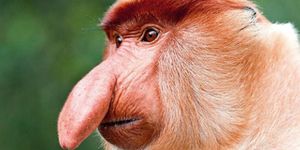Check Out All the Different Kinds of Animal Tracking Devices Scientists Use
Scientists often use tracking devices to monitor how animals move, behave, and live. Depending on the type of animal that a scientist wishes to track, these tracking devices will vary in size, shape, function, and appearance.
For example, on some birds, the tracking devices need to be very small and lightweight as not to hinder the bird's ability to fly. These are typically tethered to the bird with a string and take advantage of solar power. On larger animals, like large cats, tracking devices might be implemented as a collar and are much larger and can do more, but require a battery to work.
Scientists are able to remotely monitor the data that is given from these tracking devices using wireless technology, which allows them to track an animal's behavior over the entire life of that animal.
Information obtained from these devices can be useful for answering our questions about the wild environment, such as how animals react to climate change, where they go certain times of the year, and how they survive.








